Memorial Hospital
Shooters Hill, Woolwich, SE18 3RZ
Medical dates:
Medical character:
1890 - current
Acute. Later, geriatric, psychiatric
Plans to replace the Woolwich and
Plumstead Cottage Hospital with a more modern facilitity were
mooted in 1913 but had to be postponed on the outbreak of WW1.
After the war the local population felt that the new Hospital should be
built as a memorial for the war dead. A Hospital Fund was set up
to raise £50,000 - the anticipated cost of the new building.
In 1919 Telegraph Field (once used as a semaphore station during the
Napoleonic wars) was purchased. By 1923 sufficient funds had been
raised for work to begin. Preparation of the 13.5 acre site was
carried out as part of an Unemployment Relief Scheme.
In 1925 the Duke of Connaught laid the foundation stone and, in 1927,
the Woolwich and District Hospital Association Cottage Hospital was
officially opened by the Duke of York, accompanied by the Duchess of
York (who later became George VI and Queen Elizabeth). It had 112
beds. George V visited the Hospital in 1928 and declared it to be
the best equipped and most beautiful hospital he had ever seen; he
planted a cedar tree on the lawn in front of the Hospital.
By 1930 the Hospital was known as the Woolwich and District War
Memorial Hospital, until 1931 when it became the Woolwich and District
Hospital Association War Memorial Hospital. In 1938 it was known
simply as the Memorial Hospital.
It had been intended to add two further wings to the Hospital to
increase the bed numbers, but it proved impossible to raise the funds.
Instead, £24,000 was collected to build a Nurses' Home,
which was opened in 1939 by the Duke of Kent. When the nurses had
moved into their new Home, the Hospital was able to expand its ward
space to a potential of 300 beds, using the vacated staff accommodation.
During WW2 the Hospital became a military hospital, providing back-up
facilities for the nearby Royal Herbert
Hospital. In 1944 it had 137 beds.
In 1948 it joined the NHS as a general hospital.
In 1953 a new Out-Patients Department was opened by Princess Marina,
Duchess of Kent, who was Patron of the Hospital. The X-ray
Department was completely refurbished in 1955, with two new X-ray sets
installed.
Although originally dealing with general cases, by 1965 the Hospital
began to specialise in surgery. It had a Casualty Department,
but it was felt that its facilities were too limited to deal with the
increasing number of road traffic accidents in the area. In 1969
the Department closed when the new Accident Centre opened at
the nearby Brook General Hospital.
The acute wards were transferred to the Brook General Hospital
and St Nicholas' Hospital in Plumstead.
In the 1970s the Memorial Hospital became a geriatric hospital,
with 128 long-stay beds. A Day Hospital was built in 1975.
St Nicholas chapel opened in 1986 following the closure of St Nicholas
Hospital;
fittings from that Hospital were installed in the chapel and a window
in the chapel - the Golden Window - was transferred from Goldie Leigh Hospital. The tondo
from the British Hospital for
Mothers and Babies, which closed in 1984, is also displayed here.
|
Present status (July 2009) Oxleas NHS Foundation Trust now owns the site. Although this huge Hospital appears closed, the buildings are still partly used for a dat care centre and out-patient facilities for psychiatric patients. The main building is currently undergoing renovation and will eventually house a new day centre for the elderly. Originally scheduled to finish in autumn 2007, the building words are still going on. The ward blocks at the rear of the site were demolished in 2006 and replaced by two modern wards. UPDATE: October 2015 The Memorial Hospital is fully operational. |
|---|
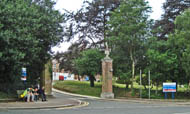
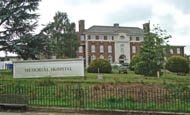
The entrance gateway and the Hospital building on Shooters Hill.
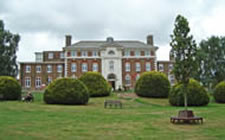
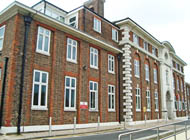
The Hospital building from the grounds (left) and the front elevation from the east (right).

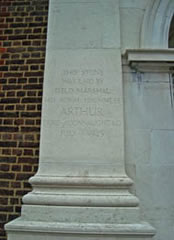
The main entrance with its cornerstone.
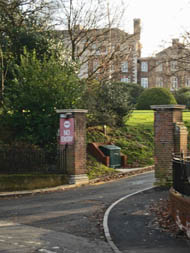
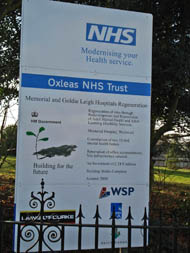
The exit drive (left). A placard (right) on Shooters Hill explains the redevelopment of the Memorial and Goldie Leigh Hospitals at a cost of £24.9m (later reduced to £15m). Two 15-bedded mental health homes will be created.

The Out-Patients Department, built in the early 1960s, was vacated when the Queen Elizabeth Hospital, Woolwich opened in 1995. The building will be converted into offices for the Trust.
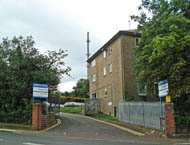
Highpoint House provides mental health services for children and their families.
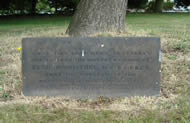
In the grounds is a tree memorial to Cecil Rowntree, FRCS, a former surgeon.

The Hall of Remembrance, a small perpetually lit hall panelled in coloured marble, lies at the centre of the Hospital. It contains glass cases with two books listing the dead of the Woolwich and Plumstead areas killed as servicemen and civilians from the two World Wars. On either side of the altar hang the flags of the Army, the Navy, Royal Air Force and the British Merchant Service. The floor and walls are lined with differently coloured marbles from Derbyshire, Cornwall, Sicily, Norway, Denmark and Italy.
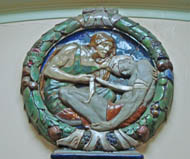
The relief medallion above the altar depicts the bandaging of an injured person.
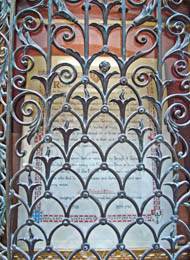
Behind the altar, protected by an ornate grill, is a Certificate of Dedication for the War Memorial.
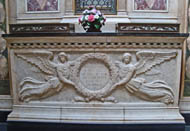
Two books lie on the altar. One contains the names of local people killed in combat and enemy air-raids during WW1, as well as those who died in munition explosions at the Arsenal. The other book contains the names of those who died during WW2. Even today a page is turned in each book every day.

A stained glass window depicting St George and the dragon on the east side of the corridor north of the Remembrance Hall.
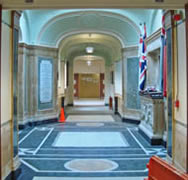
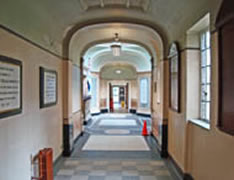
Looking along the corridor from the north (left), the altar with the its flags can just be discerned on the right. Looking along the corridor from the south (right), dedicatory plaques are shown lining the corridor.
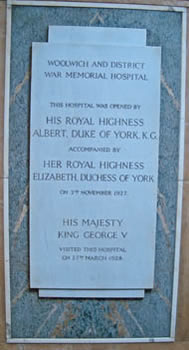
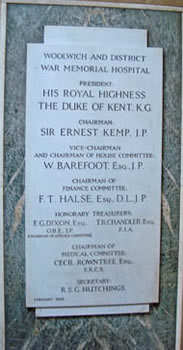
Plaques across the Hall from the altar commemorate the opening of the Hospital in 1927 and the visit by King George V in 1928 (left) and the officers of the Hospital in 1938 (right).
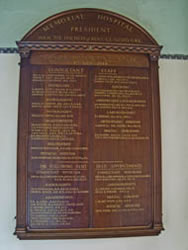
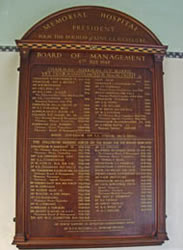
Plaques listing the Honorary Consultant Staff (left) and the members of the Board of Management (right) on 4th July 1948, just as the Hospital was about to join the NHS.
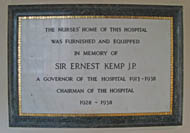
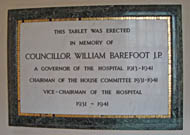
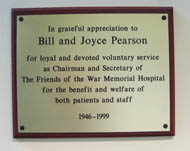
The corridor south of the Hall contains various dedicatory plaques to members of staff.
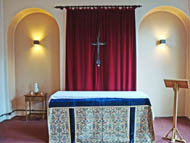
The multi-denominational St Nicholas chapel on the first floor opened in 1986, when St Nicholas Hospital closed. A sign on the door invites visitors to cover the cross with the curtains if they so wish.
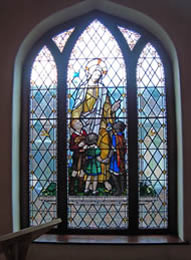
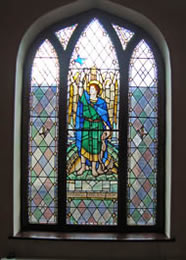
The stained-glass windows on the east wall of the chapel.
The 'Golden Window' (left) was originally installed in 1956 in the Hospital chapel at Goldie Leigh Hospital. It was moved to the Memorial Hospital chapel and rededicated in December 1986. The 'Anchor' window (right) was installed and rededicated in June 1986.
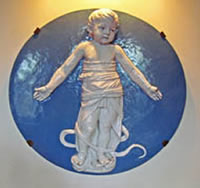
The tondo from the British Hospital for Mothers and Babies, with a dedicatory plaque, is installed on the wall opposite the stained glass windows.
|
The nearby Royal Herbert and Brook General Hospitals have been turned into luxury apartment blocks, but the Memorial Hospital is held in trust as a war memorial, so cannot be sold for redevelopment. The Remembrance area with the books of the dead is being preserved. |
References
(Author unstated) 1927 Woolwich War Memorial Hospital. British Medical Journal 2 (3488), 886.